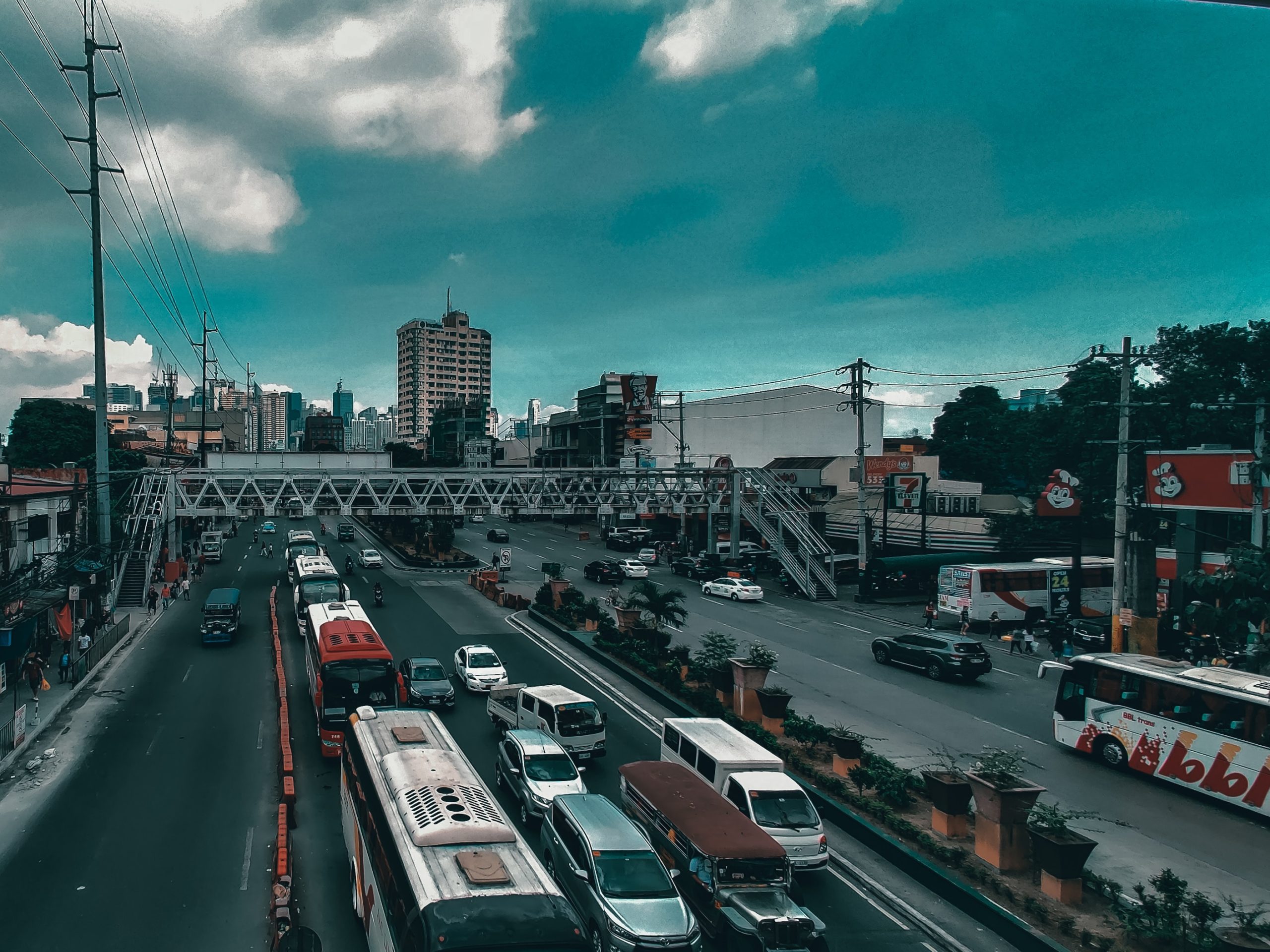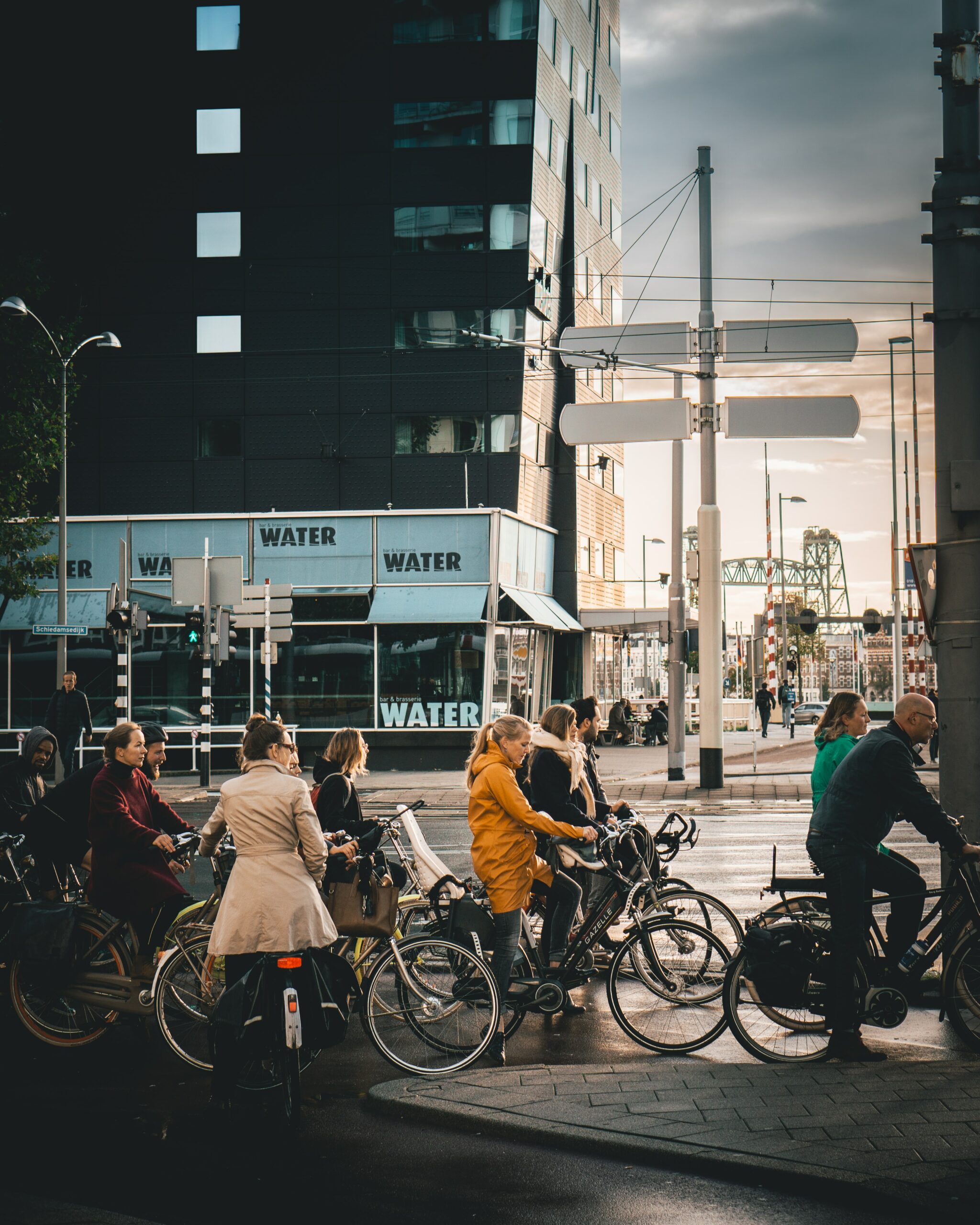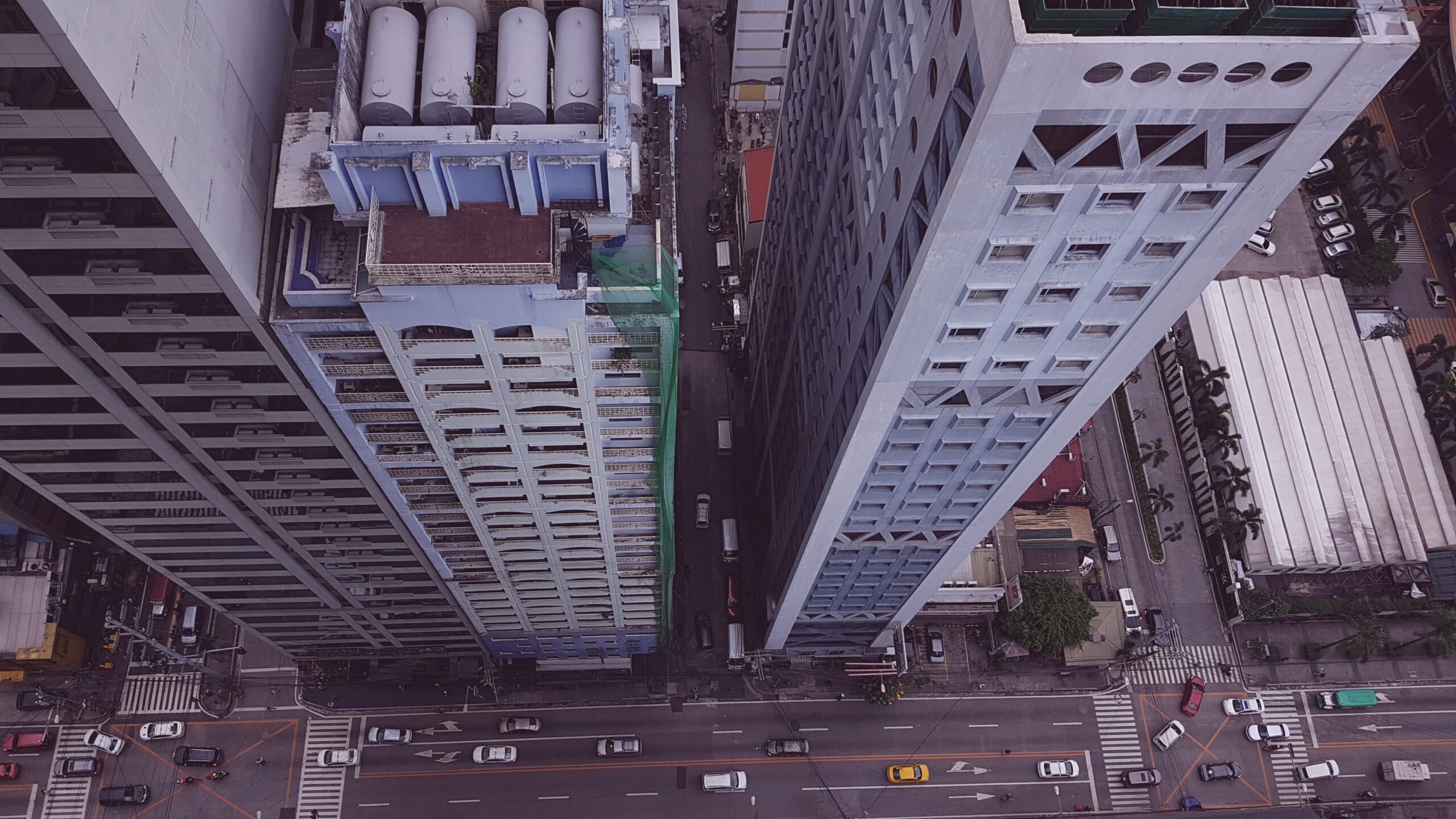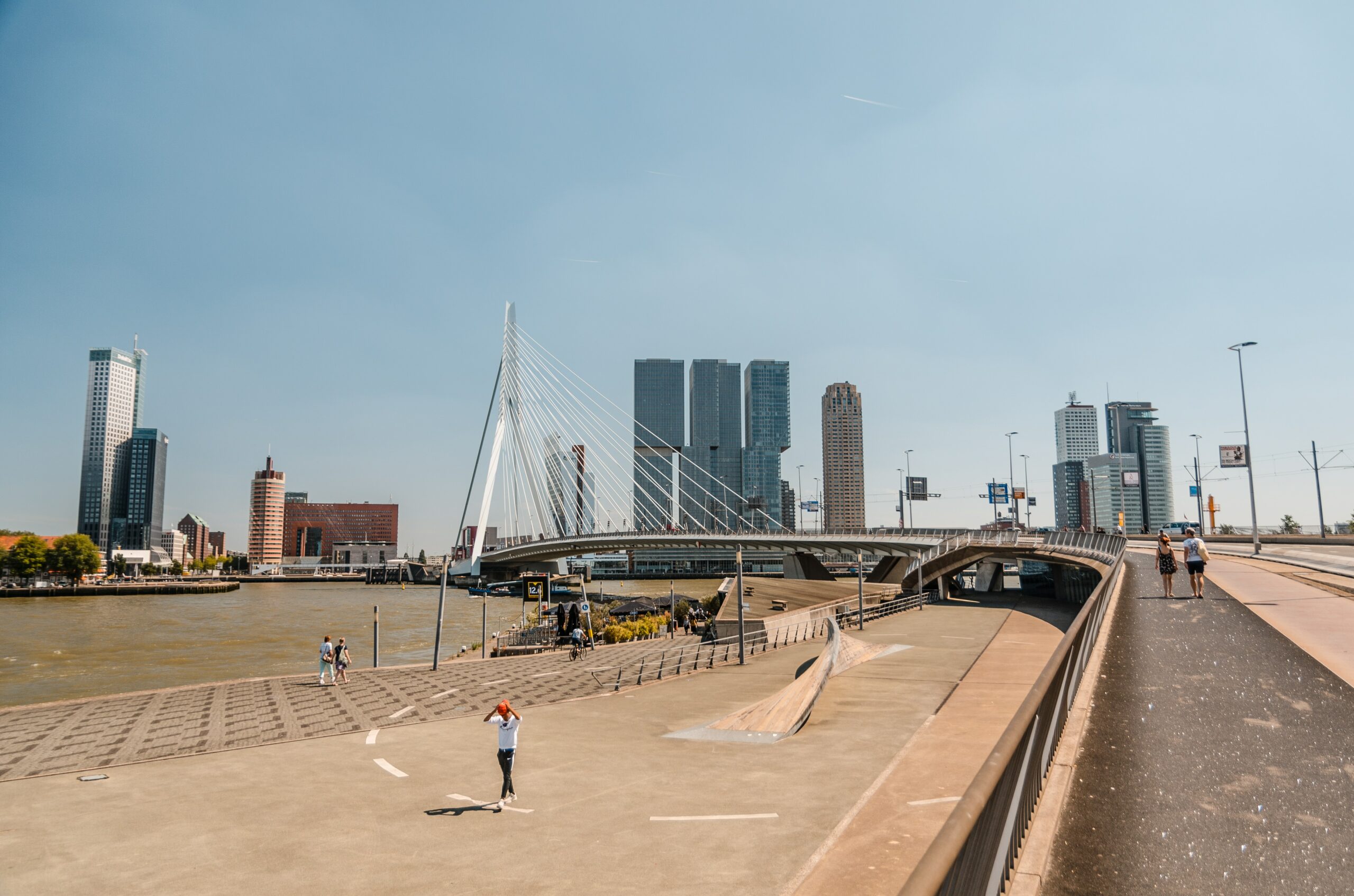
How do we create bikeable and walkable cities? It’s about public space, social programs, climate change, and housing. And getting rid of silo mentality.
Billboard
Skyscrapper
Halfpage
What do Manila and Rotterdam have in common? Nothing, where human-friendly mobility is concerned: In Manila, bicycle-riding is a dangerous endeavor, whereas in the Dutch city, cycling is a joy. So how do we create bikeable and walkable cities – in a word of active mobility – all over the world? The secret could lie in the realization that no mobility challenge is solely one of mobility: It’s also about public space, social programs, climate change, employment, and housing. And getting rid of silo mentality. A plea.
In a recent work visit to Manila in the Philippines, we had a morning meeting scheduled. “The taxi will pick you up from the hotel one hour beforehand.” A full hour of driving? We expected a location outside the city, hoping to catch beautiful views from the car. When checking the destination, we were surprised to discover it took place in a nearby district, a mere seven kilometres away. “That’s ridiculous!” we thought. “Why sit in a car for an hour when we can cycle to the location much faster?” Back home in Rotterdam, a seven-kilometre trip is a no-brainer; thirty minutes of relaxed cycling does the trick. This was one reason we went with the Dutch Cycling Embassy to Manila – to export the great quality of life that a cycling city can create.
Sadly, charting the route in Manila demonstrated that taking a bicycle would be a dangerous expedition; there’s hardly any bicycle infrastructure in Manila, and cycling on urban highways is a suicide mission. Walking and public transit were also not options: Both would take one-and-a-half hours. We were stuck with the car.
Sitting in the slow-moving taxi in Manila, we saw no beautiful views of Luzon island – instead we saw a dystopia, traffic at a stand-still. Towers and giant malls have been built, but the public space is dull and uninviting. Roads, bridges, and highways have been constructed everywhere, yet it’s clear they fill quickly. The taxi driver told us that in recent years, driving in Manila has gotten much worse since so many people can afford to buy cars.
This is indeed an urban dystopia. Economically, people are improving, yet they can’t buy their way out of the crisis. Just like us that morning, they lack a sustainable choice for moving around. The rich and middle class will buy more cars and every year, suffer worse traffic. The poor will walk or cycle alongside this disaster. A lose-lose situation.

Mobility is not only A to B, but creating C, D, and E
Work on urban mobility is, generally speaking, divided into two lines. The first is, “How do you get there?” It mainly concerns the planning and building of infrastructure (sidewalks, roads, bike lanes), and the vehicles that use them (cars, buses, bikes, e-scooters, and of course, our legs), allowing people to travel from A to B. To this end, we have seen progress. More and more cities understand that car infrastructure takes up too much space. Around the world, cities are introducing bicycle infrastructure, expanding sidewalks, and removing cars from city centers. But this is not enough, as it’s only one part of the urban mobility challenge. We already know that building more roads, updating bus lanes, improving traffic lights, or introducing e-scooters to the city won’t solve urban mobility issues. A city must work, in tandem, on the other challenge of mobility: “How do you group all destinations close together?” Streets, neighborhoods, and cities should allow the achievement of a lot without traveling far. When streets are places to play, meet, shop, and work, driving is not needed. In essence, this is dense, mixed-use urbanism that combines residential, commercial, cultural, institutional, and entertainment use on small urban scales.
As many an inspirational Instagram page quote tells you, “It’s not the destination, it’s the journey.” In urban mobility, this is truly the case. Transit via sustainable and active mobility is achieved only when destinations are closer. That’s why cities like Amsterdam, Paris, and Tel Aviv have such a high share of walking and cycling compared to the majority of their counterparts in North America. The former allow people to achieve a lot simply by walking around the corner, making it useless to take the car out of the garage.
The complexity of planning such places is left to the “how to get there” professionals. We are fascinated by new mobility schemes, hoping they will save us from ourselves. We focus on the easier question because the “how to get all the destinations together” question is just too complex. But great urban mobility is only the result of both efforts. Let’s focus on the journey, rather than the goal. Densify neighborhoods, introduce new uses, and work with local residents and businesses to create better public space. True, it’s much more complicated work, but that’s the only way we can save existing car-oriented cities.

The silo mentality is a car mentality
In 1913, Henry Ford and his then-young motor company introduced the assembly line. The idea is simple yet genius when it comes to efficiency and production: Instead of having one employee responsible for building the entire car, why not let each worker specialize in a specific task? In this way, making a car (or phone, laptop, or desk) is a rather simple process of progressively assembling the product. Unfortunately, it seems that city-making has also become an assembly line. Municipalities are divided into departments each responsible solely for one element of a city: infrastructure, housing, commerce, mobility, social issues, education, etc. These all work in silos, rarely sitting together (unless, of course, there is a dispute over responsibility). How can we expect organizing along these lines to create a mixed-use, dense, lively city?
A mixed-use, dense city is anything but siloed: It’s different people from all walks of life living together. It’s many individuals, in all their complexity, moving within a small footprint and creating harmony. It’s a “complex order,” as Jane Jacobs described great streets:
“This order is all composed of movement and change, and although it is life, not art, we may fancifully call it the art form of the city and liken it to the dance¬ – not to a simple-minded precision dance with everyone kicking up at the same time, twirling in unison and bowing off en masse, but to an intricate ballet in which the individual dancers and ensembles all have distinctive parts which miraculously reinforce each other and compose an orderly whole.”
– Jane Jacobs, The Death and Life of Great American Cities
The silo mentality from which our municipalities suffer reinforces further siloing. And silo cities are best for cars. Automobiles succeed where separation exists: houses on one side of town, offices on another. Pedestrians on sidewalks, cars on the road. Any potential surprise must be removed so that separation is absolute. We cannot undo this paradigm using these organizational strategies. As Albert Einstein said, “We can’t solve problems by using the same kind of thinking we used when we created them.”

This is probably the biggest challenge in today’s city-making, and it requires true leadership and mental strength. Dismantling silos will mean that all of us must have less ego and decision power, but we’ll all benefit in the long run. During our own work, we see how difficult this is, but also how rewarding to get specialists from all around a city to work together.
Manila – end of assembly-line cities
We recently contributed to the bicycle vision for Rotterdam. The project dealt, of course, with bicycle infrastructure and promotion, but beyond that, the vision was about promoting quality of life in the city. We acknowledged that the city had to invest more in infrastructure at the same time that different domains needed to become part of the narrative. The bicycle, as it touches so many aspects of life – mobility, health, public space, and sustainability – can bring all these domains together. All departments in the city should work to promote cycling and take advantage of a place that is built for active, sustainable mobility. The creation of local mobility hubs was proposed, to be built in neighborhoods and act as a new type of neighborhood center. The hubs will be places to meet neighbors, try new mobility options, park bicycles, learn about the neighborhood, develop professional and business skills concerning the bicycle, and much more. Imagine how many municipal departments, organizations, residents, and businesses could be affected by such a hub.
So the best way to create urban change and promote active mobility is to break up silos. No mobility challenge is solely a mobility issue: It also involves public space, social programs, climate change, employment, and much more. We must create a shared vision within cities and bring together departments to work on these visions. No more assembly-line cities.












